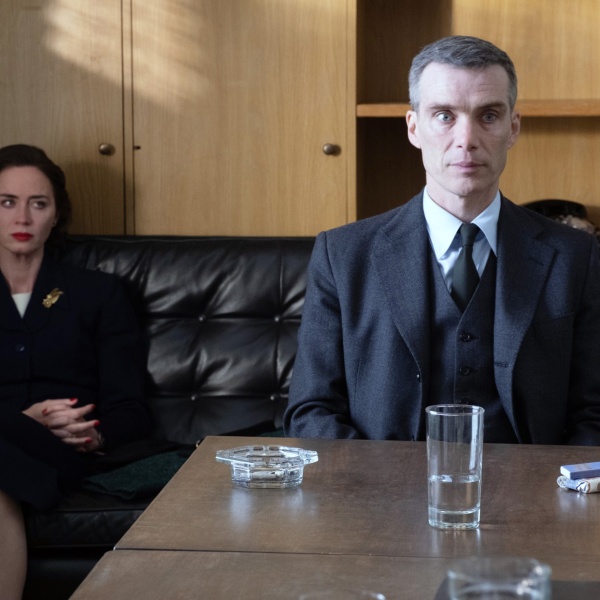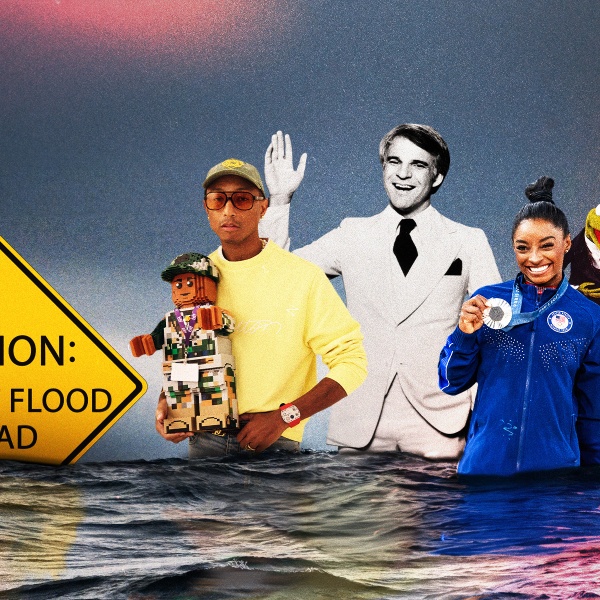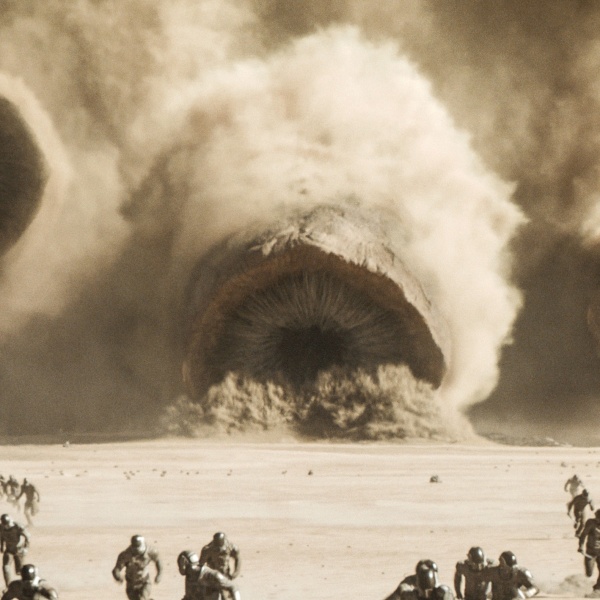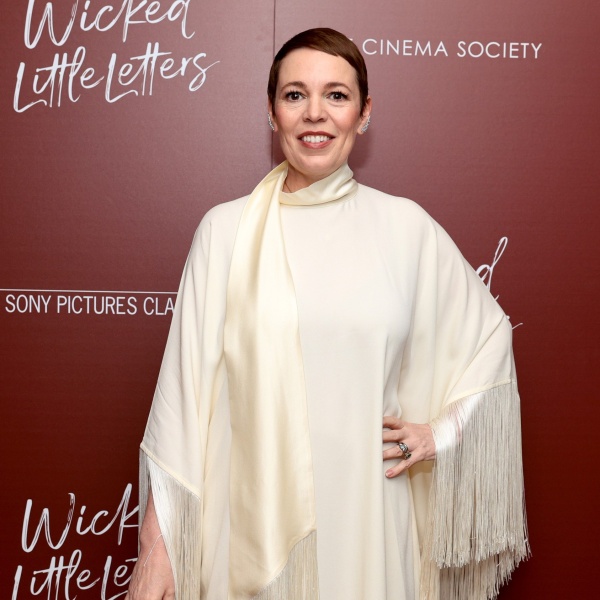Six Things We Learned From The ‘Bourne Ultimatum’ Writer

While perhaps best known for writing the blockbuster smash, “The Bourne Ultimatum,” which grossed a healthy $442 million worldwide, screenwriter Scott Z. Burns is possibly better known within the film industry for his collaborations with Academy Award-winning filmmaker Steven Soderbergh. An Oscar winner himself (as producer of “The Inconvenient Truth“), Burns has collaborated with the “Erin Brokovich” director several times, including the writer’s directorial debut “PU-239” and scripts for “Ocean’s 12” (uncredited work), “The Informant!” and this weekend’s virus thriller, “Contagion.”
An intense, terrifying and hyper-realistic portrait of what happens when a novel, SARS-like virus is introduced into a population and spreads like a deadly disease, “Contagion” is a thriller, part detective story, part metaphor for the viral-like spread of disinformation and a chilling look at how panic can act as a magnifier in an already-escalating world crisis. That’s not all he has cooking. Upcoming are collaborations with David Fincher on an updated revamp of “20,000 Leagues Under the Sea,” another collaboration with Soderbergh on “The Man From U.N.C.L.E,” and another directorial, this time a psychological thriller set in the world of the pharmaceutical industry called “The Side Effects.”
For Burns, research is everything. For “The Informant!” he researched bi-polar disorders — he calls writing the kooky tangential voice-over in the film, “pretty much the most fun I think I will ever get to have as a writer”– for “Contagion,” he spoke to virus experts around the world and discovered in his process that “epidemiology is really cool; part medicine, part detective work.”
This is a man who takes his work seriously. The Playlist recently had a lengthy interview with the screenwriter, so we’ve cherry picked 10 things about him and the films he’s worked on (and currently working on) that you need to know.
1. “Contagion” was inspired by, at least in part, from a scene in Soderbergh and Burns’ earlier collaboration, “The Informant!”
“There’s a scene in ‘The Informant!’ where Scott Bakula’s character sneezes on Matt Damon and his character goes off on an voice-over rant about, ‘Oh, great, now me and my family are going to be sick this weekend’… I mean I guess I must have always had it in the back of my mind, I guess it was in there percolating, and when we got done doing ‘The Informant!,’ Steven said, ‘do you have anything else?’ I said I’d like to write a pandemic movie, but I’d rather have it be based on reality, where the virus is jumping into the human species rather than an alien attack, divine retribution, or a conspiracy, and I wanted it to go on and be worldwide thing. That was the entire pitch. And I wrote it largely as a spec piece, and Steven gave me notes and then we got on our way and did a lot of research while we were writing it and we all continued to do research as we were shooting, so it was a really interesting process because we would find out new things and adjust the script as we went.”
2. Burns is all about research, research and research.
“I probably did 6-8 months of research really before I even started writing anything that looked like a screenplay. I started with an epidemiologist in San Francisco named Larry Brilliant who was brilliant, and who is the guy who is given credit for basically chasing smallpox off the planet, and Larry worked with me and taught me a lot about epidemiology. So I started with Larry, and then Larry introduced me to a guy named Ian Lipkin at Columbia University, who’s one of the really great virologists in the world and Ian and I talked about different kinds of viruses and how they could be transmitted and what their symptoms would be like, and where in the world they were likely to appear.”
“And then also, Larry also introduced me to a really interesting woman from the Council on Foreign Relations named Laurie Garret who had written a book I had read called “The Coming Plague” where she talked about a number of outbreaks in the world, and both Laurie and Ian were involved in SARS in Hong Kong, which served as a really good template for a lot of what we were trying to get into… Epidemiology is really cool. I mean it’s part medicine and it’s also part detective work, and you have to try to find the index patient and figure out how that person came in contact with something that really no one else in humanity had yet. I mean it has to start somewhere and to figure out how to stop it you have to know how it starts…
3. Burns says Soderbergh is a generous collaborator.
“Steven is really incredibly generous with me, and I hope that that’s grown with time. Because we’ve come, or he’s come to trust me. The amazing thing about Steven is that he’s really just in favor of what’s going to make the movie better, and because he’s not an egomaniac, he’s willing to listen to ideas from a lot of different corners…But when Steven, especially when Steven and Matt and I are working together, Steven is fine with me talking to Matt in the morning about the scenes and if Matt and I come up with an idea that’s different then something scripted, we go to Steven and we pitch it to him. And if he likes it we do it, and if not, then we don’t… I think Steven has extended that to (‘Ocean’s Twelve’ writer George Nolfi) and I know that that’s always been his approach to work is that you wrote the story and so you should be there to be the steward on some level because it’s really easy for the story to start to drift in the process of telling it… I had some experience on ‘The Bourne Ultimatum,’ there were three different writers. I was there at the beginning and then I left to actually go edit ‘PU-239,’ and Nolfi took over, and everybody has a different experience. It’s interesting when I talk to different writers in LA, they sort of look at me like they can’t believe that I’m included in every day shooting, so I guess I’ve had a very different experience and am really, really grateful.”
4. Burns doesn’t know what to make of Soderbergh’s recent back and forth retirement comments.
“Who knows? I wish I could give someone…I’ve been sitting next to him at press conferences for the last couple of weeks and obviously as a fan I don’t want to see him retire, and as a collaborator I really don’t want him to retire. Because I don’t know that there’s anybody working, especially in American film who has done as many different things, or as many different things well. I mean he works at an incredible pace. We have our premiere tomorrow night and then he’s on a plane the next day and goes and starts scouting for ‘Magic Mike.’ And Steven always will say to me that if you don’t love the job or love working then you shouldn’t be doing it. So it’s not for the red carpet that you write it but because you really like writing or you really like directing.”
5. Burns says Matt Damon is another great collaborator. (Let’s not forget the actor won an Oscar at the age of 25 for co-writing “Goodwill Hunting.”)
“I think part of why it’s easy to work with Matthew is because he has written and so he’s got respect for the craft, I think he also knows that a movie isn’t a screenplay, and that you can use the page as a point of departure, if the moment suggests that it’s wise to depart. And there are times where we’ll talk in the morning and we’ll try and come up with a better idea then what I wrote, which makes sense to me because when you’re there in the moment and you’re confronted with the location and the work you did the day before, and there are new ideas. So… having some sort of misplaced orthodoxy about how you treat the screenplay can be a problem. On the other hand there are times where I feel really good, and he’ll say no what, what you wrote is great and I’m going to do it exactly the way you wrote it. Those days feel really great when they happen.”
6. “Contagion” went through several drafts, and in its first drafts the story was on a much smaller scale focusing on only three main characters instead of six: Laurence Fishburne, Marion Cotillard and Matt Damon (Jude Law, Kate Winslet, Gwyneth Paltrow are the other six main character). Even then, some tangents were then cut back from the finished film in the interest of pace.
“I had to write a story for each character, and so there were note cards on my wall stretching out for the length of the story for all of the major characters. And the way that it worked was the first character that I came up with was the epidemiologist because I met Larry and Larry told me that the first thing… So I wanted a character working against the clock, going back in time, and that became Marion Cotillard. And then I wanted a character looking forward in time, or keeping step with the crisis, and having to deal with how do you manage a population and keep them from panicking when you can’t give them any medicine and you don’t have all of the information, and that became how do you manage panic, and that was Laurence Fishburne’s character. I had one person going back in time and one person going forward in time, and I didn’t want it to be a movie that was all inside and so I felt like we needed the audience’s proxy and someone who just had to search this thing, that was where Matt’s character came from and for a long time, that was the movie.”
“Contagion” is in theaters now.
[Photo credit: Chris CBPhotographie]





